The Shipman's Tale
This is a website about the Canterbury Tales. Here you will find a summary and information about the The Shipman's Tale

The Shipman's Tale
The Shipman's Tale (also called the Sailor's Tale) is a bawdy story about a merchant, his wife, and a lecherous monk. At its core, the Shipman's Tale is a retelling of a folk tale known as "the lover's gift regained" and features many of the stock characters and plot devices found in that story. However Chaucer has added some unique and original variations including portraying the cheating wife sympathetically and a fairly comical use of the language of money and finance to describe sex.
The Tale
The tale is set in France and features French phrases and customs for local color.
A rich merchant from Saint-Denis has a wife who loves to socialize and spend extravagantly on clothes, so that she is frequently in debt. The merchant and his wife are friends with a monk named Jean, who frequently drops in and invites himself to their house.
One day the wife confides in the monk that she needs one hundred francs in order to settle a debt but that her husband is too miserly to give her the money. She asks the monk for the money and offers to sleep with him, telling the monk that she does not love her husband, whom she says is less of a man in bed. The monk agrees to the bargain and goes off to get the money, which he borrows from the husband. The monk then has his way with his friend's wife.
When the monk's friend asks him to repay the money, the monk explains that he has already repaid it to his wife, and then leaves in a hurry. The Shipman questions his wife, who admits receiving the money, but she claims that she thought that the money had given her the money out of friendship and to repay them for all the nights that he had stayed at their home. She then says that the 100 francs have already been spent, but she promises to repay the husband in bed.
The husband forgives the wife for spending the money, and it is not clear if he suspects anything about the monk. The wife then repays the husband the debt that she owes him, by with daily instalments of her bodily delights.
The Tale contains double entendres and plays on words giving financial terms sexual connotations. For example at the end of the Shipman's Tale the wife is tallying up her debt, and the narrator comments that God willing we should continue to "tally" the rest of our lives:
Thus endeth now my tale, and God us sende
Taillynge ynough unto our lyves ende.
Amen (VII, 433-4)5
The word tally (to incur or pay debts) is given its sexual connotation by the context and also by its similarity to the word taille, which in Middle English meant both account and the slang meaning (current even today) of "tail", meaning pudendum. Indeed the wife herself makes this allusion when she invites her husband to settle the account of her debt by scoring it "upon my taille" (VII, 416) in obvious reference to the method by which the debt was to be paid.
The Interpretation
The Shipman's Tale represents a type of story called a fabliau, which is a short, irreverent, comic tale in verse dealing with obscene and scurrilous subjects. These types of stories are particularly critical of the Church and monks social mores; they entertain as well as providing subversive commentary on social customs and hierarchies of the time. Until Chaucer adopted the genre, the fabliau was primarily a genre of French literature, though it had also influenced Boccaccio. A variant of this story can be found in Boccaccio's Decameron, with which Chaucer was familiar.
The plot itself is similar to the often told folk tale called the "the lover's gift regained" in which typically a husband is tricked out of money or some valuable property by his wife's lover, who uses it to purchase the wife's affection. Typically the husband then discovers the ruse and recovers the property but not before the lover has slept with his wife. The end result is that the lover gets to love for free and the wife sacrifices her honour without any gain.
However in Chaucer's adaptation the wife is not a victim. She gets to keep the money and has an amorous escapade with the monk, but does not get caught or punished. The husband is the only real victim, largely through his own avarice. He becomes a cuckold, loses his money, and ends up foolishly accepting his own wife's affection as compensation. Some critics see feminist tendencies in the way the wife comes out ahead, through in my view the opposite is true. The fact that the wife is forced to sell herself first to the monk and then to the husband, says a lot about women's subservient role in the society of the time.
The tale is also a satire on merchants and the mercantile class, as well as on the economics of sex. The irony is that the merchant is very careful with money and as a result even his home life has become commercialized. But he is not getting the better end of the deal. His money has allowed his friend the monk to "buy" the merchant's wife and now the wife is paying him back her husband through conjugal relations, something that ought to be given freely.
Canterbury Tale Summaries
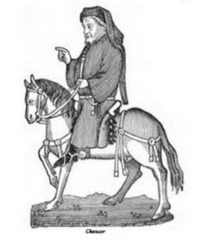
Geoffrey Chaucer
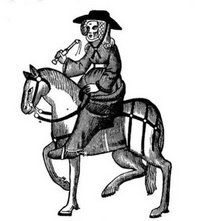
The Wife of Bath's Tale
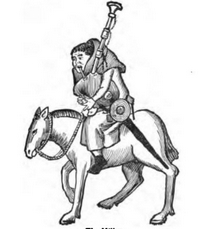
The Miller's Tale
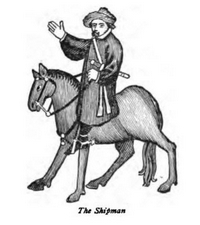
The Shipman's Tale
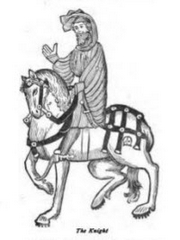
The Knight's Tale
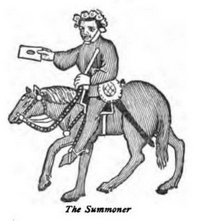
The Summoner's Tale
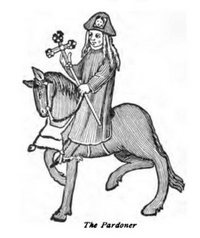
The Pardoner's Tale

The Prioress's Tale
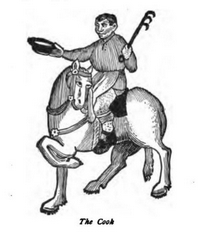
The Cook's Tale
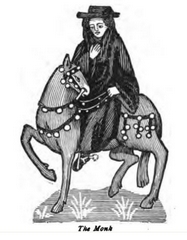
The Monk's Tale
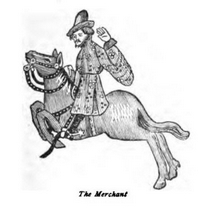
The Merchant's Tale
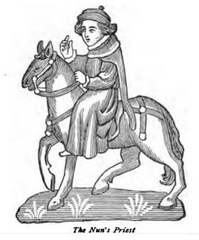
The Nun's Priest's Tale

The Franklin's Tale
Main Page | Site Updates | Privacy Policy | Site Map | XML Map | RSS | Contact | About
Canterbury Tales
